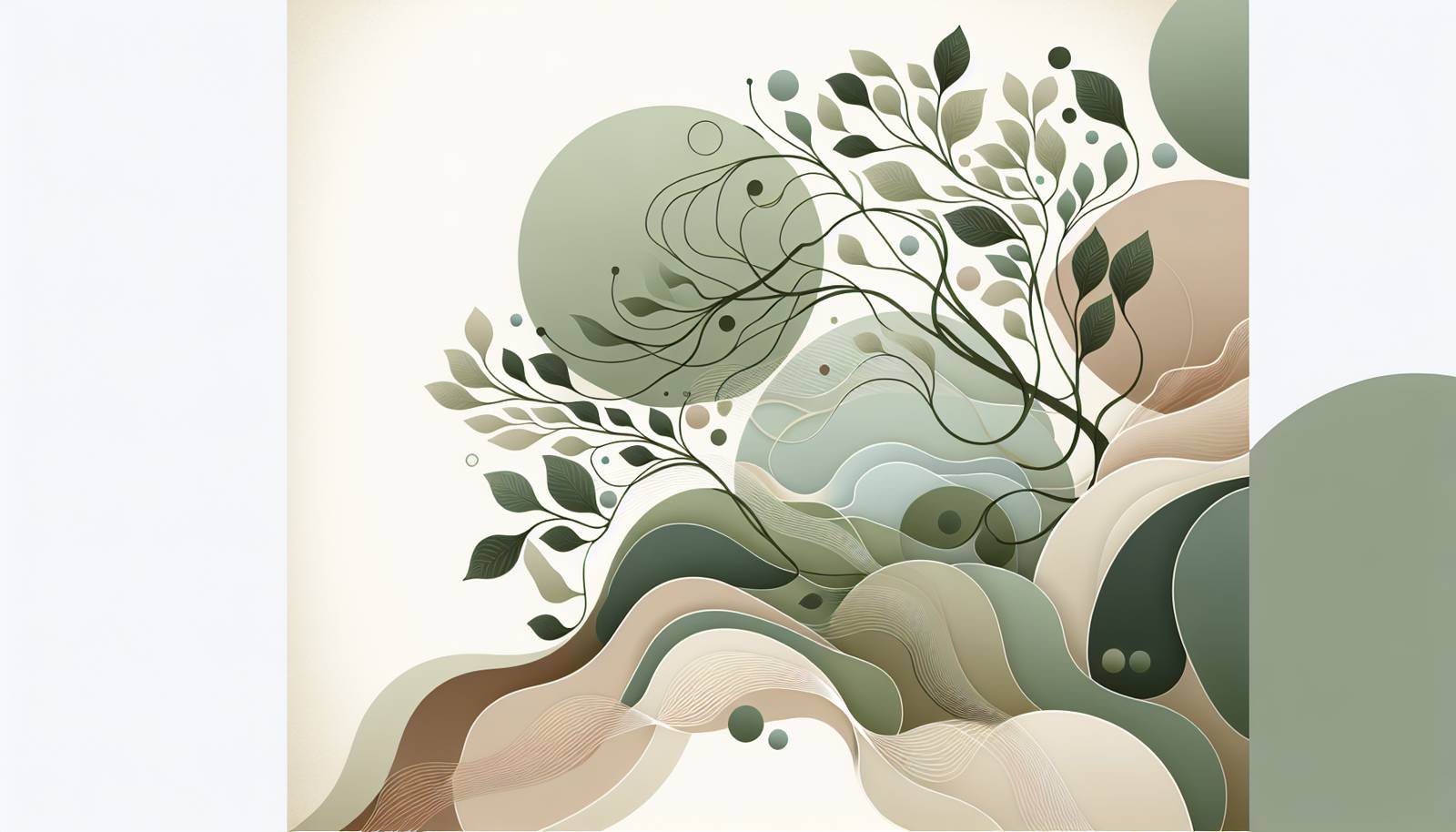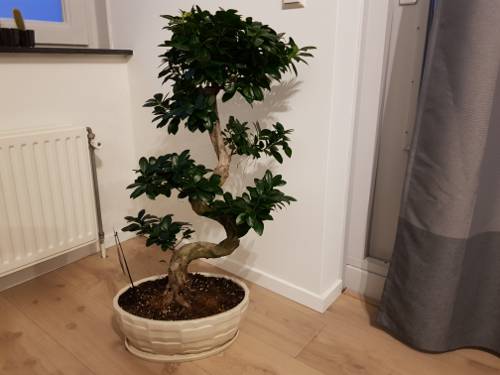
FAQ About Indoor Bonsai Tree Styles and Aesthetics

What are the most popular indoor bonsai tree styles?
The most popular indoor bonsai tree styles include the Formal Upright (Chokkan), Informal Upright (Moyogi), Slanting (Shakan), Cascade (Kengai), and Semi-Cascade (Han-Kengai). Each style has unique characteristics and places different aesthetic demands on the grower, involving various techniques to mimic natural tree growth patterns.

How does the formal upright (Chokkan) style differ from the informal upright (Moyogi) style?
The Formal Upright (Chokkan) style is characterized by a straight, vertical trunk and branches that are evenly spaced out, creating a balanced appearance. On the other hand, the Informal Upright (Moyogi) style has a trunk that is more relaxed and features gentle curves, creating a more natural and less symmetrical look.

What is the artistic philosophy behind bonsai styling?
Bonsai styling is deeply rooted in the philosophy of harmony and balance. The art form aims to create miniature trees that reflect the beauty, complexity, and serenity found in nature. Emphasis is on asymmetrical balance, simplicity, and a harmonious relationship between the bonsai and its container.

Why is pruning important in bonsai tree aesthetics?
Pruning is essential in bonsai tree aesthetics as it helps to maintain the desired shape and style of the tree. It encourages bushier growth, allowing the practitioner to guide the formation of branches and leaves, and helps in achieving the proportions that are key to traditional bonsai designs.

What techniques are used to shape a bonsai tree?
Techniques to shape a bonsai tree include pruning, wiring, defoliation, deadwood, and grafting. These techniques allow for control over the growth of branches and roots to develop the desired aesthetic appearance, simulating mature trees found in nature.

Can you keep a cascade style bonsai indoors?
Yes, you can keep a cascade style bonsai indoors. However, it requires careful placement to ensure adequate sunlight and to prevent damage from the pot's lower branches, which cascade below the pot. It's important to mimic its natural environment as closely as possible for healthy growth.

Are there specific pots for different bonsai styles?
Yes, specific pots are often chosen to complement different bonsai styles. The pot's size, shape, and color should harmonize with the tree's appearance and style. For instance, cascade and semi-cascade styles typically use deep pots to accommodate the downward growth of branches.

What is the significance of asymmetry in bonsai design?
Asymmetry is significant in bonsai design because it reflects the irregular and unpredictable nature of trees in the wild. This principle contributes to the dynamic balance and visual interest of the bonsai, contrasting with symmetrical arrangements that can appear static or artificial.

How do traditional Japanese aesthetics influence bonsai styles?
Traditional Japanese aesthetics, such as wabi-sabi (appreciating beauty in imperfection) and ma (space and harmony), significantly influence bonsai styles. These principles guide bonsai artists in creating trees that convey simplicity, naturalness, and the beauty of imperfection.

What is the role of balance in bonsai aesthetics?
Balance in bonsai aesthetics refers to the visual distribution of elements within the tree and between the tree and its pot. An aesthetically balanced bonsai appears stable and pleasing, with a harmony that captures the tranquil and orderly essence of nature.

How do bonsai artists use wiring in tree styling?
Bonsai artists use wiring to gently bend and shape branches into desired positions. This technique gives the artist control over the shape and direction of growth, allowing them to refine the tree's silhouette according to the chosen style while ensuring structural integrity.

What are the characteristics of the slanting (Shakan) bonsai style?
The Slanting (Shakan) style features a trunk that slants to one side, mimicking trees that grow on slopes or against strong winds. The branches generally grow out horizontally, balancing the tree's visual weight across the inclination, creating a dynamic yet stable appearance.

Why is the selection of a bonsai pot important for aesthetics?
The selection of a bonsai pot is important because it complements the tree's style and enhances the overall aesthetics. A well-chosen pot accentuates the tree, reflecting its character and balancing the three key elements: form, color, and texture.

What are the aesthetic challenges of growing indoor bonsai compared to outdoor bonsai?
Growing indoor bonsai presents unique aesthetic challenges, including limited light availability, humidity control, and space constraints. These factors can affect the tree's growth and the execution of styles. Indoor environments may require additional lighting and watering adjustments to maintain aesthetics.

How can defoliation enhance bonsai aesthetics?
Defoliation, the process of removing leaves, can enhance bonsai aesthetics by promoting smaller leaf growth and increased ramification. This technique improves the tree's proportions and helps achieve a more refined look by allowing better light penetration and air circulation within the canopy.

What makes the cascade (Kengai) style unique in bonsai art?
The Cascade (Kengai) style is unique because it resembles trees that grow on cliff faces, with branches cascading downward past the pot's edge. This style challenges the traditional upward growth of trees and showcases the artist's skill in mimicking nature's harsh conditions, creating a dramatic and elegant display.

Can traditional bonsai styles be adapted for tropical indoor species?
Yes, traditional bonsai styles can be adapted for tropical indoor species. Many tropical species, such as ficus and jade, respond well to pruning and styling, allowing them to be shaped into various traditional styles. However, attention must be given to their specific light and humidity requirements.

What is the role of deadwood techniques in bonsai styling?
Deadwood techniques, including Jin and Shari, are used in bonsai styling to create the appearance of age and weathering. These techniques simulate natural damage and decay from lightning or harsh conditions, adding texture and depth to the bonsai, enhancing its dramatic effect.

How do practitioners achieve an aged look in bonsai trees?
Practitioners achieve an aged look in bonsai trees through careful pruning, wiring, and deadwood techniques. Using aging techniques such as Jin and Shari, alongside growing techniques like increasing trunk girth and enhancing bark texture, contributes to the tree's mature aesthetic.

What are the key considerations when designing a bonsai landscape indoors?
Designing a bonsai landscape indoors requires considerations of space, light, and humidity. Ensuring a balance in these elements is crucial for healthy growth. Additionally, integration of trees, accents, and pots must harmonize artistically to create a cohesive and aesthetically pleasing display.
